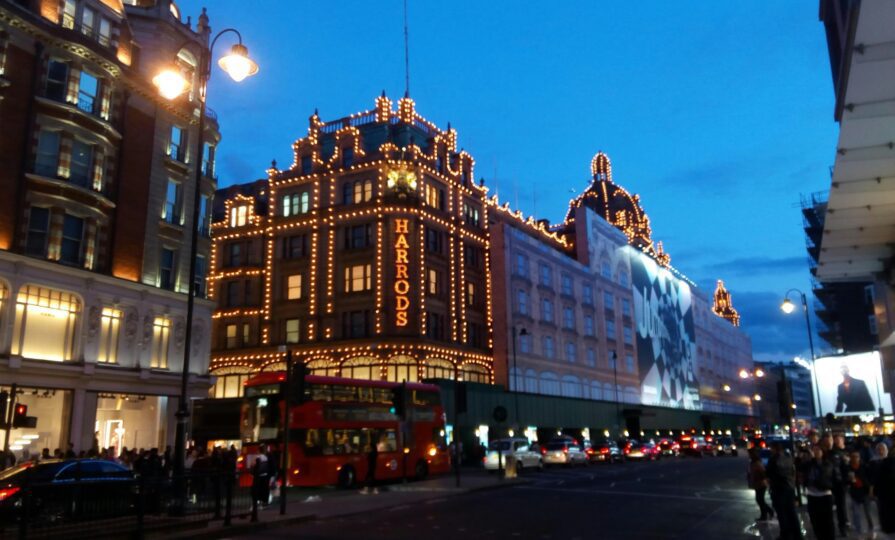Retail insights for the Golden Quarter ahead
Research indicates that 46% of millennials visit stores weekly, and Gen Z shoppers are twice as likely as average consumers to visit apparel shops

Register to get 1 free article
Reveal the article below by registering for our email newsletter.
Want unlimited access? View Plans
Already have an account? Sign in
The Golden Quarter – November to January – remains the most critical period for UK retailers, and in 2024, the stakes are higher than ever. Consumers are still risk-averse in the run-up to Christmas, but coupled with the rise of social commerce and growing sustainability concerns, you get both challenges and opportunities.
Online growth continues to outpace in-store sales
While festive traditions may bring shoppers to the high street, recent data from Experian and Reward indicates that online shopping is the preferred choice for many. Year-to-date online spending has increased by 4% compared to 2023, while in-store purchases have declined by 2%. If this trend holds, the UK retail sector could see an additional £28bn in online sales this Golden Quarter, representing a £1.1bn increase over last year.
To make the most of this, ensure your website is fast, user-friendly and ready to handle increased traffic to avoid losing customers to a poor online experience.
Sustainability drives purchase decisions
Sustainability is no longer a niche concern, and it hasn’t been for a while. Transactions at second-hand marketplaces have grown by 21% year-over-year, driven not only by younger shoppers but also by those aged between 45 and 54, as well as those over 55 – with spending in these groups increasing by 56% and 59%, respectively. Projections indicate the second-hand sector could generate £363m during the Golden Quarter, spelling a £111m rise from the previous year.
Seek out collaborations with second-hand or refurbished goods platforms to capture this growing market segment, while also highlighting your own eco-friendly products and transparent supply chains.
The social commerce surge
Social media is transforming retail. Sales through social platforms have risen by 32% compared to last year, and forecasts predict a £212m boost this season. Social commerce allows consumers to purchase directly from their feeds, blending entertainment with convenience.
Experiences over material gifts
A shift toward experiential gifting is emerging. Spending on ticketing websites is up 9%, driven by millennials aged between 35 and 44, who have increased their spending by 10%. Experience providers have also reported a 6% year-on-year sales increase, suggesting consumers value memorable experiences over traditional gifts.
Returns management is a growing challenge
Nearly 38% of shoppers admit to buying clothing for single-use events during the holidays, only to return them afterward. This trend emphasises the need for efficient returns processes and policies that balance customer satisfaction with business profitability.
It is in your best interest to review your policies, also identify patterns in your customers shopping habits and adjust inventory or marketing efforts to reduce unnecessary returns. Consider tiered refund policies for items showing significant wear.
The role of physical retail in a digital age
Despite the growth of online and social commerce, physical stores are far from obsolete. Research indicates that 46% of millennials visit stores weekly, and Gen Z shoppers are twice as likely as average consumers to visit apparel shops. For these groups, in-store visits are about more than just buying – they offer a chance to connect with brands and discover trends.
You can lure more people in stores by ensuring a seamless experience across both channels. For instance, click-and-collect services and in-store exclusives can drive traffic. Don’t rule out the impact of community engagement, either; they can strengthen ties with your local customer base.
Value and discounts drive decisions
Economic pressures continue to influence spending patterns. According to YouGov, 48% of consumers aren’t swayed by Black Friday or Cyber Monday deals, yet 69% plan to spend the same or more as last year. However, 43% are waiting for promotions, and 63% expect discounts of at least 20% before making a purchase.
The hidden cost of discounts and impulse buys
There is a catch to the last point: discount-driven shopping increases returns, with 29% of consumers admitting to returning items bought on sale. Festive one-off purchases – like party outfits and Christmas jumpers – contribute to this surge.
High street resilience is tenuous beyond the holidays
The future of the high street remains a concern. According to RetailNext, 71% of consumers believe more government support is needed for physical retail, and 75% want specific measures to boost high streets. The resilience of these spaces depends on sustained, community-focused investment.
Younger shoppers are the key to high street revival
Gen Z and millennials are driving foot traffic, especially in fashion and health & beauty. Gen Z is twice as likely as the average consumer to visit apparel stores weekly, while millennials lead visits to health & beauty shops. Despite their digital habits, 66% of Gen Z prefer discovering fashion trends in-store.
So, what should you do? Offer experiential retail spaces where possible, where you can offer unique in-store events that can’t be replicated online. This can also help bridge the use of digital and physical through the use of in-store QR codes or apps to connect physical, and digital shopping journeys.







